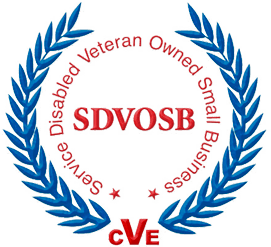From Rockets to Records: Why Healthcare Tech Is Today’s Most Complex Frontier
Explore the intricate world of managed modern health IT, surpassing rocket science in complexity. Discover key challenges in integrating patient data, navigating regulations, and balancing technology with patient-centered care. Learn why healthcare IT demands constant innovation and adaptability in today's digital age.
Managed Modern Health IT Is More Complex Than Rocket Science: Navigating the Challenges of Healthcare Technology
Managed modern health IT systems are incredibly sophisticated, rivaling even the complexity of rocket science. These systems must integrate vast amounts of patient data, comply with stringent regulations, and seamlessly connect various healthcare providers and technologies. According to Epic founder and CEO Judy Faulkner, health IT is more complex than rocket science due to the intricate web of interconnected systems and constantly evolving medical knowledge.
While rocket science deals primarily with physics and engineering principles, health IT must navigate the ever-changing medical research landscape, patient privacy laws, and diverse healthcare practices. It requires technical expertise and a deep understanding of healthcare workflows, clinical processes, and the unique needs of different medical specialties.
As you delve into managed modern health IT, you’ll discover its challenges and opportunities. From ensuring data interoperability between different healthcare providers to implementing robust security measures that protect sensitive patient information, the field demands constant innovation and adaptability.
Key Takeaways
- Managed health IT systems integrate complex data and technologies to improve patient care.
- Health IT professionals must navigate evolving regulations and diverse healthcare practices.
- Effective health IT management is crucial for optimizing healthcare outcomes and efficiency.
The Evolution of Health IT
Health information technology has undergone remarkable transformation over the decades. Advancements in computing power, data storage, and connectivity have revolutionized healthcare delivery, improving patient outcomes and operational efficiency.
Early Developments
The 1960s saw the introduction of essential electronic health records (EHRs) in hospitals. These systems primarily focused on billing and administrative tasks. In the 1970s, you might have encountered early clinical decision support systems, though their adoption was limited.
The 1980s brought wider use of computers in healthcare settings. Hospital information systems began integrating clinical data with financial information.
By the 1990s, personal computers had become more common in medical practices. This enabled the development of practice management software and more sophisticated EHR systems.
Era of Digitization
The turn of the millennium marked a significant shift towards digital health records. The Health Information Technology for Economic and Clinical Health (HITECH) Act of 2009 incentivized healthcare providers to adopt EHRs.
You likely noticed a rapid increase in EHR implementation during this period as healthcare organizations invested heavily in digital infrastructure.
Interoperability became a key focus. Standards like HL7 emerged to facilitate data exchange between different systems.
Mobile health applications gained popularity, allowing you to access health information on smartphones and tablets.
Integration of Advanced Technologies
In recent years, cutting-edge technologies have been integrated into health IT systems. Artificial intelligence and machine learning algorithms now assist in diagnosis and treatment planning.
You can benefit from telehealth platforms that enable remote consultations and monitoring. These systems have become particularly crucial during public health crises.
Big data analytics help you gain insights from vast amounts of healthcare data. This supports evidence-based decision-making and population health management.
Blockchain technology is being explored to enhance data security and interoperability. You may see increased use of Internet of Things (IoT) devices for continuous patient monitoring and data collection.


Components of Modern Health IT
Modern health IT encompasses a complex ecosystem of interconnected technologies. These components enable efficient healthcare delivery, improved patient outcomes, and streamlined administrative processes.
Software Systems
Electronic health records (EHRs) form the backbone of health IT software. These systems allow you to securely store, manage, and access patient data. Clinical decision support tools integrate with EHRs to provide real-time insights and recommendations.
Practice management software helps you handle scheduling, billing, and insurance claims. Telemedicine platforms enable remote consultations and monitoring. Picture archiving and communication systems (PACS) manage medical imaging data.
Interoperability standards like HL7 FHIR facilitate seamless data exchange between different systems. Analytics and reporting tools help you extract valuable insights from healthcare data for quality improvement and population health management.
Hardware Infrastructure
Robust hardware is essential to supporting modern health IT systems. High-performance servers store and process vast amounts of healthcare data, while workstations and mobile devices allow users to access information at the point of care.
Specialized medical devices, such as vital signs monitors and imaging equipment, integrate with IT systems to capture and transmit patient data. Wearable devices and IoT sensors enable continuous monitoring and data collection.
Data storage solutions, including on-premises and cloud-based options, ensure you can securely manage and scale your healthcare data. Backup and disaster recovery systems protect against data loss and ensure business continuity.
Network and Security
A reliable and secure network infrastructure is crucial for modern health IT. High-speed internet and wireless networks enable seamless data transfer and access across healthcare facilities.
Virtual private networks (VPNs) and secure remote access solutions allow you to work safely from any location. Firewalls and intrusion detection systems protect against cyber threats.
Encryption technologies safeguard data at rest and in transit. Identity and access management systems ensure that only authorized personnel can access sensitive information. Regular security audits and penetration testing help you identify and address vulnerabilities in your IT infrastructure.
Data Management and Interoperability
Healthcare data management and interoperability are cornerstones of modern health IT. They enable seamless information exchange, improve patient care, and enhance operational efficiency across the healthcare ecosystem.
Standardization of Data
Data standardization is crucial for effective healthcare interoperability. Common standards like USCDI and HL7 FHIR are revolutionizing health information exchange. These standards ensure that data from different systems can be understood and utilized across various platforms.
Implementing standardized data formats helps you:
- Reduce errors in data interpretation
- Streamline data sharing between healthcare providers
- Facilitate more accurate clinical decision-making
As you adopt these standards, you’ll notice improved data quality and consistency across your organization’s systems.
Health Information Exchange
Health Information Exchange (HIE) is vital for coordinated patient care. It allows you to share patient information securely across different healthcare settings.
Benefits of robust HIE include:
- Enhanced care coordination
- Reduced duplicate testing
- Improved patient outcomes
Implementing HIE can be challenging due to technical and organizational barriers. However, the benefits far outweigh the initial hurdles.
Patient Data Privacy and Consent
Protecting patient privacy is paramount when managing health data. You must navigate complex regulations like HIPAA while ensuring data accessibility for authorized users.
Key considerations for patient data privacy:
- Implementing strong access controls
- Encrypting data at rest and in transit
- Maintaining detailed audit logs
You should also prioritize patient consent management. This involves creating precise, understandable consent forms and processes that empower patients to control their data sharing preferences.
The Complexities of Health IT Management
Managing health IT systems involves intricate operational challenges, strict regulatory compliance, and diverse stakeholder engagement. These factors combine to create a landscape more complex than rocket science.
Operational Challenges
In health IT management, you face numerous operational hurdles. System interoperability is a significant concern, as you must ensure seamless data exchange between different platforms and devices. Legacy systems that may not easily integrate with modern solutions complicate this task.
Data security is paramount. You’re responsible for safeguarding sensitive patient information from cyber threats, which are constantly evolving. This requires ongoing vigilance and regular system updates.
Downtime management is critical. You must minimize disruptions to healthcare delivery while performing necessary maintenance and upgrades. This often involves coordinating with multiple departments and planning for contingencies.
Resource allocation presents another challenge. You need to balance budgetary constraints with the need for cutting-edge technology that can improve patient care and operational efficiency.
Regulatory and Compliance
In health IT management, you must navigate a complex regulatory environment. HIPAA compliance is non-negotiable, requiring you to implement strict privacy and security measures.
Staying up-to-date with changing regulations is crucial. You need to adapt your systems and processes quickly to meet new requirements, which can be frequent and far-reaching.
Audit trails and documentation are essential. You must maintain detailed records of all system access and changes to demonstrate compliance during audits.
International regulations add another layer of complexity if your organization operates across borders. You may need to comply with GDPR, PIPEDA, or other regional data protection laws.
Stakeholder Engagement
Effective health IT management requires engaging with diverse stakeholders. Clinicians, administrators, and IT staff often have different priorities and needs that you must balance.
You must provide clinical staff with user-friendly interfaces while ensuring robust backend functionality. This often involves extensive training and support to facilitate adoption.
Patient engagement is increasingly important. You may need to implement secure, accessible, regulatory-compliant patient portals and mobile apps.
Vendor management is another critical aspect. You must coordinate with multiple technology providers to ensure integrated solutions that meet your organization’s needs.
Executive buy-in is crucial for successful IT initiatives. You need to communicate the value of IT investments in improved patient outcomes and operational efficiency.
Health IT vs. Rocket Science
Health information technology and aerospace engineering present unique challenges. While both fields demand precision and innovation, they differ significantly in complexity, scope, and impact on human lives.
Comparative Analysis
Health IT systems manage vast amounts of sensitive patient data across interconnected networks. You’ll find these systems must comply with stringent regulations like HIPAA. In contrast, rocket science focuses on physics, propulsion, and navigation.
Health IT requires constant updates to accommodate new medical discoveries and changing healthcare practices. Rocket science, while evolving, operates on more established physical principles.
Both fields demand error-free performance. A glitch in a health IT system could endanger patient lives, while a rocket malfunction could result in catastrophic failures.
Health IT Complexity
Health IT integrates diverse systems, from electronic health records to imaging technologies. It also involves dealing with a complex web of stakeholders: patients, providers, insurers, and regulators.
Epic’s CEO Judy Faulkner believes health IT is more complex than rocket science. This complexity stems from the need to handle unpredictable human factors and ever-changing medical knowledge.
Health IT must also address interoperability challenges, ensuring seamless data exchange between systems and healthcare providers.
Innovations and Breakthroughs
You’re witnessing rapid advancements in artificial intelligence and machine learning in health IT. These technologies are revolutionizing diagnosis, treatment planning, and patient care.
Telemedicine and remote patient monitoring are expanding healthcare access. Innovations in wearable devices and IoT integration for real-time health tracking are also occurring.
Rocket science breakthroughs include reusable rockets and plans for interplanetary travel. While impressive, these innovations typically have a narrower scope than the wide-reaching impact of health IT advancements on daily healthcare delivery.
The Future of Managed Health IT
Managed health IT is poised for significant advancements to revolutionize healthcare delivery and patient outcomes. Emerging technologies, data-driven insights, and personalized approaches are set to transform the landscape.
Emerging Trends
Smart hospital solutions are at the forefront of managed health IT’s future. You’ll see increased Internet of Things (IoT) device integration, enabling real-time monitoring and data collection.
Artificial intelligence and machine learning will be crucial in automating administrative tasks and enhancing clinical decision-making. This automation will free up healthcare professionals to focus more on patient care.
Blockchain technology will improve data security and interoperability, allowing for seamless sharing of patient information across different healthcare providers. You can expect enhanced cybersecurity measures to protect sensitive health data.
Telemedicine and remote patient monitoring will continue to expand, providing greater access to healthcare services, especially in underserved areas.
Predictive Analytics
Predictive analytics will become a cornerstone of managed health IT. You’ll benefit from systems that can forecast disease outbreaks, identify high-risk patients, and optimize resource allocation.
Advanced algorithms will analyze vast amounts of health data to predict patient outcomes and suggest preventive measures. This proactive approach will help reduce hospital readmissions and improve overall population health.
Healthcare providers will use predictive models to anticipate staffing needs, manage inventory, and streamline operations. These insights will lead to cost savings and improved efficiency.
Risk stratification tools will enable you to identify patients likely to develop chronic conditions, allowing for early intervention and personalized care plans.
Personalized Medicine
Digital health technologies will drive the growth of personalized medicine. Genomic sequencing and analysis will increase, leading to tailored treatment plans based on individual genetic profiles.
Wearable devices and mobile health apps will provide continuous health monitoring, allowing real-time treatment regimen adjustments. This data will be integrated into electronic health records for comprehensive patient profiles.
AI-powered clinical decision support systems will assist healthcare providers in recommending personalized treatment options based on a patient’s unique characteristics and medical history.
Precision medicine initiatives will leverage big data analytics to identify patterns and correlations, enabling more accurate diagnoses and targeted therapies for complex conditions.
Optimizing Health IT for Better Outcomes
Health IT optimization involves leveraging technology to enhance healthcare delivery and patient outcomes. By implementing best practices, providing comprehensive training, and fostering a culture of continuous improvement, healthcare organizations can maximize the benefits of their IT investments.
Best Practices
To optimize health IT systems, start by standardizing processes and data. This ensures consistency across the organization and facilitates data sharing and analysis.
Implement robust security measures to protect patient information. Regular security audits and updates are crucial to safeguard sensitive data.
Focus on interoperability to enable seamless communication between different systems and departments. This will improve care coordination and reduce errors.
Utilize data analytics to gain insights into patient care, operational efficiency, and resource allocation. Data-driven decision-making can lead to significant improvements in healthcare delivery.
Consider cloud-based solutions for scalability and accessibility. Cloud technologies can enhance collaboration and provide remote access to critical information.
User Training and Support
Practical training is essential for successful health IT implementation. Develop comprehensive training programs tailored to different user roles and skill levels.
Offer hands-on practice sessions to familiarize staff with new systems. This helps build confidence and reduces resistance to change.
Provide ongoing support through helpdesk services and peer mentors. Quick resolution of technical issues minimizes disruptions to patient care.
Create user-friendly documentation and quick reference guides. These resources empower users to troubleshoot common issues independently.
Encourage feedback from end-users to identify areas for improvement. Their insights can help refine the system and enhance user experience.
Continuous Improvement
Establish a dedicated team to oversee health IT optimization efforts. This team should regularly assess system performance and user satisfaction.
Monitor key performance indicators (KPIs) to track the impact of IT initiatives on healthcare outcomes. Use this data to guide future improvements.
Stay updated on emerging technologies and industry trends. Evaluate new solutions that could enhance your current IT infrastructure.
Conduct regular audits to identify inefficiencies and areas for optimization. This proactive approach helps maintain system effectiveness over time.
Foster a culture of innovation by encouraging staff to propose ideas for IT improvements. Recognize and reward initiatives that lead to measurable enhancements in healthcare delivery.
Why Rural Hospitals & Critical Health Clinics Need A Reliable IT Partner
Rural healthcare facilities face unique challenges in managing their IT infrastructure. A dependable IT partner can provide critical support, ensure compliance, and optimize technology for improved patient care.
CCS IT Pros Works Exclusively With Rural Healthcare
CCS IT Pros specializes in serving rural hospitals and clinics and understanding their specific needs. They offer tailored solutions for electronic health records and telehealth systems.
Their focused expertise allows them to address common rural healthcare IT challenges, such as limited bandwidth and outdated hardware. CCS IT Pros can help you implement cost-effective solutions that improve patient access to health information.
By partnering with CCS IT Pros, you gain access to a team familiar with rural health recruitment and retention strategies. This knowledge helps implement IT systems that attract and retain healthcare professionals in rural areas.
Years Of Experience Working Within The Medical Community
With extensive experience in the medical field, CCS IT Pros brings valuable insights to your rural healthcare facility. They understand the importance of HIPAA compliance and can help you maintain patient data security.
Their expertise extends to integrating various healthcare technologies, such as laboratory information systems and medical imaging. This integration can streamline your workflows and improve overall efficiency.
CCS IT Pros can assist you in leveraging technology to enhance ancillary services and generate additional revenue for your facility. Their experience ensures that you receive IT solutions tailored to the unique needs of rural healthcare providers.
Latest Blog Posts
How to Create a Business Continuity Plan That Works
Introduction Every business faces unexpected disruptions — from power outages and cyberattacks to natural disasters. [...]
5 Ways to Enhance SMB Business with an MSP
Introduction Small and medium-sized businesses face more technology pressure than ever. Cybersecurity risks, cloud adoption, [...]
How to Secure Your Business Before the Holiday Season
The holiday business security guide is essential for every small and medium-sized business preparing for [...]
5 Things SMBs Must Know About Holiday Phishing Scams
The holiday phishing scams tips every small and medium-sized business needs are simple but powerful. [...]
5 Things Manufacturers Need To Know Before Hiring A Local IT Company
5 Things Manufacturers Need To Know Before Hiring A Local IT Company Are you looking [...]
IT Help Desk For Law Offices (Service Overview)
Stop Thinking About IT And Start Focusing On Your Caseload With so much to prioritize [...]











